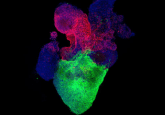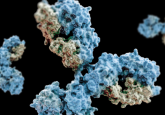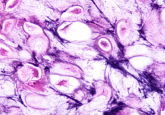How to: model a heart attack

Researchers from the University of Southern California (CA, USA) have created a model that could one day be used to test personalized heart drugs for those who have experienced a heart attack.
Senior author Megan McCain and first author Megan Rexius-Hall have developed a ‘heart attack on a chip’, which replicates key features of a heart attack and allows scientists to observe how the heart changes following injury. The device also serves as a testing ground for heart-related drugs that can limit further heart damage after a heart attack.
In the United States, coronary heart disease is a major killer, accounting for approximately 697,000 deaths in 2020. Heart attacks, spurred by severe heart disease, happen when there is a build-up of fat and other substances in the coronary arteries, the arteries that supply the heart with blood. The lack of oxygenated blood getting to the heart causes significant damage to heart muscle, which means that even if the person survives, their cardiac muscle cells have sustained a major hit.
Adverse remodeling is the term used to describe how the heart changes following a heart attack; immune cells gather at the site of damage and scarring develops, both of which can cause further injury. However, it is unclear how damaged cardiac muscle cells interact with healthy ones.
 Love really hurts without you: oxytocin helps regenerate the heart
Love really hurts without you: oxytocin helps regenerate the heart
Oxytocin is known as the love hormone due to its role in generating pleasure, but research finds it might also be implicated in cardiomyocyte regeneration.
The research team created the chip from a square microfluidic device made from PDMS, a rubber-like polymer. Two channels, one on either side of the device, were then installed to deliver gases to the polymer. A thin layer of the oxygen-permeable PDMS was then fixed on top followed by a micro layer of a gap junction protein, Cx43, patterned to mimic the arrangement of heart cells. Finally, rodent heart cells were grown on top of the protein layer.
To simulate a heart attack, the channel on one side of the microfluidic device was pumped with gas that didn’t contain oxygen and the other channel was pumped with gas containing oxygen to create an oxygen gradient, which is not possible in traditional cell culture models.
The microfluidic device is clear and small, which makes it easy to view on a microscope, allowing researchers to observe real-time changes in heart muscle following damage, such as arrythmia or weakened heart contractions.
The researchers hope that future iterations of the model will include immune cells and fibroblasts to increase the complexity and authenticity of the ‘heart attack on a chip’ model. McCain concluded, “it is very exciting and rewarding to envision our device having a positive impact on patient lives in the near future, especially for heart attacks, which are extremely prevalent.”





